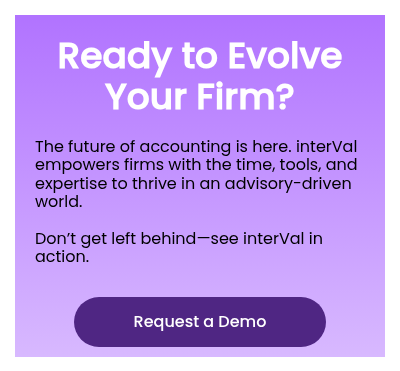
Demystifying Goodwill in Business Valuation
Welcome to the final post in our series on understanding business valuation. If you’ve stuck with us so far, you’ve learned about Tangible Asset Backing and Non-Operating Assets. Now, we’re diving into the most challenging yet crucial pillar: Goodwill. It’s a term that’s often misunderstood, so let’s break it down as clearly as possible.
What Is Goodwill in Valuation?
When people hear the word "Goodwill," they often think of a specific asset listed on a Balance Sheet, perhaps linked to a brand, a client list, or reputation. But in valuation theory, Goodwill isn’t a tangible thing you can point to. Instead, it’s a calculation—a number that represents the value of a business beyond its tangible and non-operating assets. It’s the value tied to the future earning potential of the business.
In simpler terms, Goodwill is the value of the business’s ability to generate cash flow into the future, less the value of its underlying tangible assets. More importantly, it signifies the ability to transfer those future cash flows to a potential third-party purchaser.
Here’s how we calculate it step-by-step:
The Formula for Goodwill
The Goodwill calculation hinges on two key components:
- After-Tax Maintainable Cash Flow (After-Tax MCF)
- The Multiple (derived from the Weighted Average Cost of Capital or WACC)
Goodwill = (After-Tax MCF x Multiple) - Tangible Asset Backing
Let’s break these down further.
Step 1: Determining the After-Tax Maintainable Cash Flow (MCF)
Maintainable Cash Flow is essentially the amount of cash the business can reasonably generate on an ongoing basis, less income taxes. To calculate this, we analyze the business’s historical performance, looking for trends, outliers, and adjustments.
How We Determine MCF:
- Review Historical Data: Look at revenue, expenses, and cash flow over the past 3-5 years.
- Adjust for Outliers: Remove any one-time or non-recurring income and expenses (e.g., a lawsuit settlement or a major one-off project).
- Identify Trends: Is revenue consistently growing? Are costs stable? Trends help predict future performance.
- Select a Representative Range: Based on this analysis, we determine a range that reflects what the business can consistently generate in cash flow on a prospective basis.
This number becomes the foundation for calculating Goodwill.
Step 2: Calculating the Multiple (WACC)
The Multiple is what we use to capitalize the Maintainable Cash Flow. While many people think of industry multiples (like EBITDA multiples) when valuing businesses, the multiple in valuation theory is more precise. It’s the inverse (1/X) of the Weighted Average Cost of Capital (WACC) less a long-term growth rate (1/WACC -g).
What Is WACC?
WACC is the blended cost of the capital used to finance the business. In simpler terms, it’s the cost of equity (money provided by owners) and debt (money borrowed) combined, weighted by the proportion of each. It essentially measures the level of risk operating the particular business and achieving the after-tax cash flows in Step 1 above.
How to Calculate WACC:
To calculate WACC, we need four things:
- Cost of Equity (Ke): The return shareholders expect for investing in the business.
- This is built up from:
- Risk-Free Rate of Return: What investors can earn on a risk-free investment (e.g., government bonds).
- Market Equity Risk Premium: The additional return expected for investing in the stock market.
- Industry Risk Premium: The additional risk tied to the business’s specific industry.
- Size Premium: A factor added for smaller businesses, which are riskier.
- Company-Specific Risk Premium: Adjustments for the unique risks of this business (e.g., reliance on one customer, location challenges, management experience, etc.).
- This is built up from:
- Cost of Debt (Kd): The after-tax borrowing rate of the business.
- Optimal Capital Structure: The ideal mix of equity and debt based on industry benchmarks and/or comparable companies..
- For example, if the industry average is 70% equity and 30% debt, that’s the structure we’ll use.
- The WACC Formula:
WACC = (Ke × %e) + (Kd × %d)
Where %e is the percentage of equity, and %d is the percentage of debt in the capital structure.
Example Calculation:
- Ke (Cost of Equity): 25%
- Kd (Cost of Debt): 6%
- %e (Equity Proportion): 70%
- %d (Debt Proportion): 30%
WACC = (25% × 70%) + (6% × 30%) = 17.5% + 1.8% = 19.3%
The Multiple = 1 / WACC - g = 1 / 0.193 = 5.18
Step 3: Calculating Goodwill
Once we have the After-tax MCF and the Multiple, calculating Goodwill is straightforward:
Goodwill = (MCF x Multiple) - Tangible Asset Backing
For example:
- Maintainable Cash Flow (MCF): $500,000
- Multiple (1 / WACC): 5.18
- Tangible Asset Backing: $1,000,000
Implied Goodwill = ($500,000 x 5.18) - $1,000,000 = $1,590,000
Bringing It All Together
Goodwill is the portion of a business’s value that reflects its ability to generate cash flow beyond the value of its tangible and non-operating assets. It’s the value of the intangibles—the systems, reputation, market position, and other factors that make a business more than the sum of its parts.
By understanding Goodwill and how it’s calculated, advisors and business owners can gain deeper insights into what drives (or limits) the value of a business. This knowledge enables proactive decision-making to build sustainable, long-term value.
Final Thoughts
Valuation is both an art and a science. Tangible Asset Backing, Non-Operating Assets, and Goodwill together form the pillars of a comprehensive valuation. By breaking these concepts down, we hope to empower you with the tools to better understand—and grow—the value of your business.
Thanks for reading our series! If you have questions or want to learn more about valuation, we’re here to help. Let’s start building real value together.
Authors: Colin Szemenyei and Gary Sanghera, CPA, CMA, CBV
